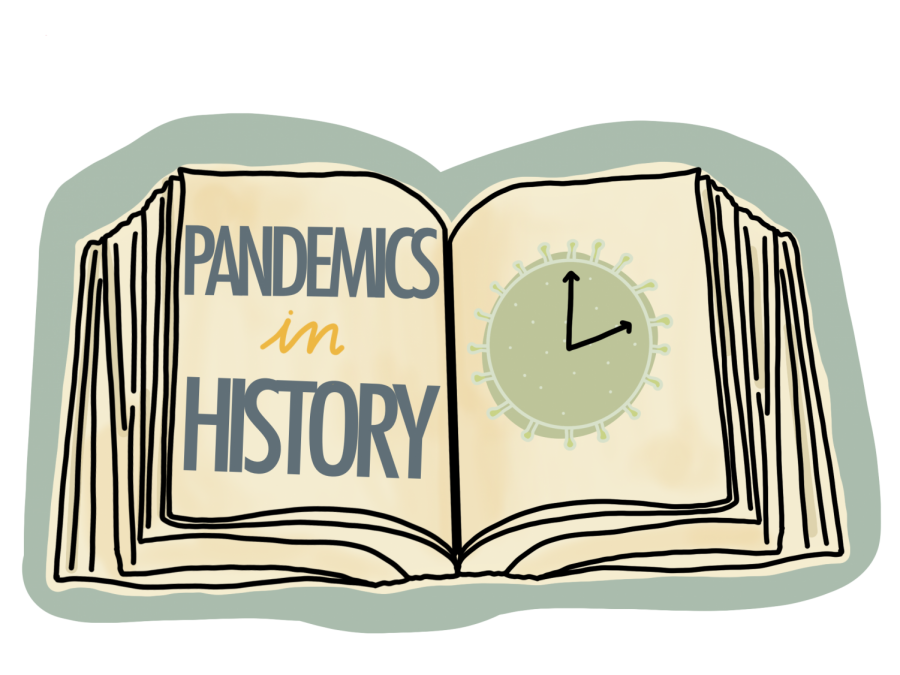How Covid-19 Aligns with Pandemics of the Past
September 28, 2020
The first ripples of COVID-19 hit Austin, Texas, on March 13, which just so happened to be a Friday the 13th. As the largest school district in the area, Austin ISD cancelled school in an attempt to help contain the ever-spreading virus. This action inaugurated, for Austinites, the COVID-19 closure saga that continues still today. Lockdowns were implemented, which, for most residents, was virtually unheard of. It became near-impossible to get once plentiful supplies like toilet paper, hand sanitizer, or masks. Almost nobody felt safe going for a walk in the park, swimming or doing any of the activities that are so quintessentially Austin, and most people cancelled summer travel plans. These are just the personal effects – which are nothing in comparison to the effects on government action. Statewide lockdowns, mask requirements, closed schools, and business restrictions have become a part of our daily lives at a speed that would make Usain Bolt look positively sluggish. Even though many of these actions are, and should be, considered a massive overstep of normal governmental power, they inaugurate a new era of governmental crisis intervention.
Governmental economic intervention is arguably the most groundbreaking and effective part of the current US viral response. There is virtually no other time in human history where a central government has ever intervened in an economic manner to help its people during a pandemic in such a manner as the US government is reacting today. The idea of government economic intervention to restart and keep an economy moving is a relatively brand-new idea. The first time it was ever really practiced was during the Great Depression, and it has been a mainstay of governments ever since. During most previous major pandemics in the US, there was effectively no social welfare provided by the government to their people to help them either stay alive or keep the wheels of the economy going. Even though the action of printing and distributing trillions of dollars is an alarming expansion of the machinery of government, the idea of providing temporary extra assistance during a major time of crisis is an integral one. Keeping the momentum of an economy going, especially during a pandemic, is a task that can’t be left to a system that’s not able to regulate itself. The fact that the government has stepped in during the current pandemic is an interesting move which has challenged traditional ideas about the proper role of government for better or worse.
Another older, more unnerving part of the government’s COVID-19 response is their social controls, like mask wearing, social distancing rules, and quarantining. Even before the theory of the germ was close to propagation, governments across time had put certain controls in place during pandemics to prevent the spread of disease, like border and internal travel restrictions, and most importantly, self-quarantine. The Black Plague, the Spanish Flu, and almost every other epidemic or pandemic since the beginning of feudalism, features some version of a quarantine. The difference between then and now, however, is that governments in the past had little to no day-to-day power over their citizens’ lives. Now, governments insert themselves into our lives far more than they ever have. Given the large social profile of government, from regulating our healthcare to the manner in which restaurants employ people, the thought of even further expansion of that profile is alarming. Our social systems, unlike our economic systems, rarely need correction, so to see such a large, although not new, government intervention in our lives should and does ring some alarm bells in many citizens’ minds.
Overall, this double-headed effort to protect the United States from the worst socio-economic problems sprouting from the pandemic has been semi-successful. That’s not to say that it’s been perfect. There have been hiccups ranging from the distribution of the economic aid so important in times of crisis to simple civil unrest regarding new social regulations. It’s also impossible to ignore the fact that if any of these actions were taken in any sort of regular time, it would be a massive overstep of what our founders had intended, one that would and should be vigorously challenged. But these are not normal times, and the United States is a rather unwieldy object, so to have this level of protection of civil liberties in the midst of a pandemic is a truly commendable victory.


